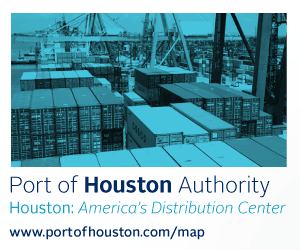
Wednesday, August 6, 2014
Panama Canal expansion could spike insurance costs
The Panama Canal expansion could result in more than $1.25 billion in additional insured goods passing through the canal in a single day, according to a new report from insurance company Allianz Global Corporate and Specialty.
The Panama Canal expansion, expected to open in 2015, will let an additional 12-to-14 larger vessels traverse the canal per day, which amounts to about 4,750 extra ships per year, according to AGCS.
The firm's new report, "Panama Canal 100: Shipping Safety and Future Risks," reports that the surge in the volume of cargo will increase the loss potential of any possible casualty, which could lead to disruption to the supply chain. Their premise is based on the fact that larger vessels can pose serious salvage challenges in a congested shipping environment, potentially leading to back-ups.
The wider canal will let 12,600-TEU vessels through the new locks. Right now only container vessels with a maximum capacity of 4,400 TEUs can get through.
The increased size of vessels will play a vital role in increasing canal throughput capacity from 300 million Panama Canal Universal Measurement System tons to 600 million PCUMS tons, AGCS says. One Panama Canal Universal Measurement System ton is approximately 100 cubic feet of cargo space. One TEU is equivalent to approximately 13 PCUMS tons.
This increase in volume will have a big effect on the insured value of goods transported through the canal, especially on the mammoth New-Panamax ships, which are as long as four football fields, according to the report. In the event of an accident, the report says, there could be a dearth of qualified salvage experts available to handle the mega ships.
"Larger ships automatically pose greater risks," says Captain Rahul Khanna, AGCS global head of Marine Risk Consulting. "The sheer amount of cargo carried means a serious casualty has the potential to lead to a sizeable loss and greater disruption. For example, a fully-loaded new-Panamax 12,600-TEU container ship is as long as four football fields with a beam of up to 160 feet and could have an insured cargo value alone of $250 million."
The report says the regional impact of an incident with bigger ships is also of concern. With larger ships on the move in the surrounding region, an incident could also affect traffic at major ports in the U.S., resulting in a potential increase in the disruption of the flow of goods and insurance losses. In addition, a number of U.S. terminals on the East and Gulf Coasts are exposed to hurricanes. AGCS also says port operating procedures will have to be reviewed with regard to wind and weather constraints given the tight operating margins that these ships will be facing.
AGCS believes training is key to offsetting the new risks, both in the canal region itself and in affected ports.
"The expansion of the Panama Canal will represent a new shipping environment for many mariners," Khanna said. "Due to the increase in the number of larger vessels passing through this important waterway the level of training provided to pilots will be extremely important. Attempting to maneuver one of these vessels through such a restricted space in itself creates a much bigger hazard."
For more of the report: agcs.allianz.com
More Newswire stories
IANA: Intermodal sector gains in Q2 indicate recovery
Shipping company Pasha competes with Matson for Hawaii market
2014 International Seafarers Center benefit on Queen Mary, September 30
Container ship crew stranded on the Delaware


Home | The Magazine | Conferences | Port Handbooks | Newswire | Advertise | Ocean Schedules | Contact
CBN Archives | About CBN | Subscribe to CBN | Marine Fuels Conference | Southeast Freight Conference | Heartland Shippers’ Conference | Port Productivity Conference | Pacific Northwest Ports Handbook
Golden Gates Ports Handbook | Southern California Ports Handbook | Buy Handbooks | Subscirbe to Newswire | Newswire Archives | Upload Files







